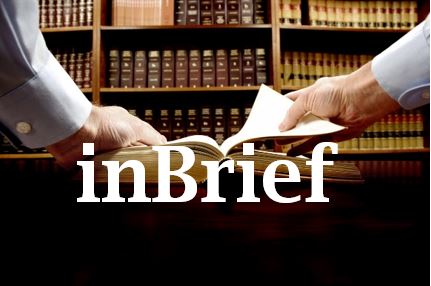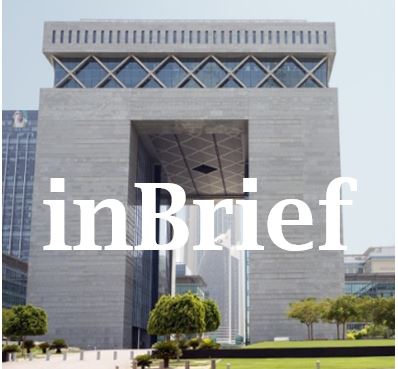Overview
The new Pledge Law of the UAE was enacted on 12 December 2016 as Federal Law No. 20 of 2016. The Pledge Law was published in the Federal Official Gazette on 15 December 2016 and will become effective on 15 March 2017. The Pledge Law introduces a new regime for registering a pledge over movable assets which are pledged as security for the repayment of a debt. Whilst the Pledge Law provides some helpful guidance on the type of movable asset pledges that can be registered and the effects of registration, the key administrative details regarding the administration of the pledge register, including the entity that will establish and operate the register, the format of the pledge contract that will be registered and the registration procedure and fees will be outlined in the Executive Resolutions to the Pledge Law; which will be issued by the UAE Cabinet within 6 months of the effective date of the Pledge Law (the “Executive Regulations”). The most significant development under the Pledge Law is that it is no longer necessary for a lender to take possession of movable assets in order to perfect a pledge over the same. This means that a lender is no longer required to appoint an employee/representative of the pledger, as its agent, in order to take possession of any pledged movable assets.
Certain Key Features
- In comparison to the previously unregistered pledges, which simply created a contractual right that needed to be enforced by the UAE civil courts, the Pledge Law allows a pledgor to perfect its legal rights over the movable assets through registration.
- Once registered, the pledge gives the pledgor priority over third parties and the registration is deemed notice to third parties.
- A broad category of pledge assets that can be registered, including bank accounts, tangible and intangible assets, fungible assets, raw material and future assets.
- It is not possible to register a pledge over certain types of movable assets including (i) assets relating to home or personal use, (ii) receivables under an insurance policy, (iii) public, foreign consulates or endowment properties, (iv) rights resulting from future inheritance, and (v) assets which require possession or specific registration, in order to perfect a pledge over the same.
- The public will have access to information regarding a registered pledge. However, details regarding the information that will be made available to the public and the procedure for requesting the same will be outlined in the Executive Resolutions.
- A lender may secure a pledge over tangible and intangible assets of a commercial business, as security for any acquisition funding provided to acquire such commercial business. Such pledge will have priority over the rights of any purchaser, lessee or lien holder, provided that the pledge is registered before the creation of any other rights on the relevant assets. It is not clear to what extent this would replace the current use of commercial mortgages, which also secures an interest over tangible and intangible assets.
- If the pledgor or obligor (as applicable) fails to perform its obligations under the pledge contract the pledgee may seek to sell the pledged asset, pursuant to the mutual agreement of the parties or through a summary judgement from the UAE courts.
Application of the Pledge Law
The Pledge Law applies to all civil and commercial transactions that create a right of pledge over movable assets in accordance with the provisions of the Pledge Law. The Pledge Law includes a broad category of pledge assets that can be registered, including bank accounts, commercial paper, tangible and intangible assets (previously intangible assets could only be pledged under a commercial mortgage for LLCs and would require a UAE licensed bank to act as the mortgagee), raw material and fungible assets and future assets (which was not previously possible as this would create a floating charge, which was not recognised under UAE law).
However, the Pledge Law does not apply to movable assets that can only be pledged by possession or where UAE laws require an interest over such assets to be registered under a specific register (e.g. vessels, cars, planes and shares of an LLC). Furthermore, it is not possible to register a pledge over certain categories of assets including (i) assets relating to home or personal use, unless they have been pledged as security for financing the purchase of the same, (ii) proceeds under an insurance policy, unless such proceeds relate to a pledged asset (iii) public, foreign consulates or endowment properties, (iv) rights resulting from future inheritance and (v) assets which require possession or specific registration, in order to perfect a pledge over the same.
How to Create a Right of Pledge
In order to register a pledge, the parties must (i) conclude a pledge contract, including details of the pledged asset, declaration from the pledgor confirming his right to pledge the pledged asset and the nature of the secured debt and (ii) notify the holder of the pledged asset (if not held by the pledgor). The pledge shall be registered by filing the necessary registration form with the registrar. All persons that should be notified of the pledge registration under the provisions of the Pledge Law (e.g. third party holders of the pledged asset), must be notified of the pledge registration at the time of the application. The pledge registrar and registration fees / charges (which will be paid by the pledgor, unless agreed otherwise by the parties) will be specified in the Executive Resolutions.
Once the pledge is registered the legal rights of the pledgee shall be effective against third parties. The pledgee shall be entitled to track and inspect the pledged asset (even if it is held by a third party), have priority over any income generated from the pledged asset and benefit from other priorities that are specific to certain types of pledged assets. For example, any registered pledge over a movable asset that is attached to real property shall have priority over any pledges relating to the real property, provided that the pledged movable asset can be removed without damaging the real property. The pledge rights over the movable asset attached to real property must also be registered in the relevant real estate register.
Enforcement
If the pledgor fails to perform its obligations under the pledge contract then the pledgee may (following prior written notice to the pledgor or obligor (as applicable)) request the sale of the pledged asset at market value within 10 working days, provided that certain conditions are met including (i) the parties agreeing to proceed with the sale without resorting to the courts, (ii) there are no outstanding third party rights over the pledged asset, (iii) notice of the enforcement to the person holding the pledge asset and owner of the real property (in the event that the pledged asset is connected to real property). In the case of pledged accounts the sums in the pledge account may be set-off by the account bank against sums owed to the pledgee (in the case that the pledgee is also the account bank) or the amount in the pledged account can be claimed from the account bank.
Alternatively, the pledgee may apply to the UAE courts for a summary judgement to exercise his rights over the pledged asset. This may involve placing the pledged asset into the hands of a third party in order to affect the sale of the pledged asset. The summary proceedings judge shall notify all relevant parties of the application, who may lodge an objection to the court. If the court permits the summary judgement application it shall permit the pledgee to either (i) take possession of the pledged asset and sell the same at market value or (ii) attach additional conditions for the sale of the pledged asset. The pledgee must register the decision of the court in the pledge register before selling the pledged asset. The pledgee must deposit the sale proceeds, from the sale of the pledged asset, into the treasury of the court, in accordance with the sale procedure set out under the Executive Resolutions.
The sale proceeds shall be distributed in accordance with the directions of the court, taking into account the rights of any other parties over the pledged asset. However, generally the sale proceeds shall be distributed in the following order of priority:
(a) any expenses relating to repairing, the sale, licensing or maintenance of the pledged asset;
(b) charges and fees relating to the enforcement of the pledge, including judicial fees;
(c) to the pledgees, in accordance with the priority determined by the court; and
(d) any surplus to be distributed in accordance with the laws of the relevant emirate.
Any remainder of the purchase price shall be distributed to the pledgor. If the sale proceeds are insufficient to discharge the debt secured by the pledge, the pledgor shall remain liable for the remaining unpaid debt. Enforcement and sale of the pledged asset will not be possible if the pledgor is subject to any preventative composition, bankruptcy or equivalent procedures under the Federal Decree Law No. 9 of 2016.
Termination of Pledge
A registered pledge may be terminated if (i) the pledgee and pledgor or obligor (as applicable) agree to strike-off the registration, (ii) the obligor discharges the obligations that are secured by the registered pledge, (iii) the registration relates to assets that cannot be pledged under the Pledge Law, (iv) the pledgee fails to discharge its obligations following the registration of the pledge contract, or (v) a court order is issued to strike-off the pledge registration.
Conclusion
Whilst the Pledge Law provides a valuable opportunity for lenders to perfect their rights through registration, the popularity of the new regime will depend largely on the administrative registration mechanisms that will be outlined in the Executive Resolutions. Nonetheless, the concept of the pledges register is another step (along with the introduction of the share pledge register under the new UAE Companies Law) towards providing greater certainty and protection for lenders. ■






